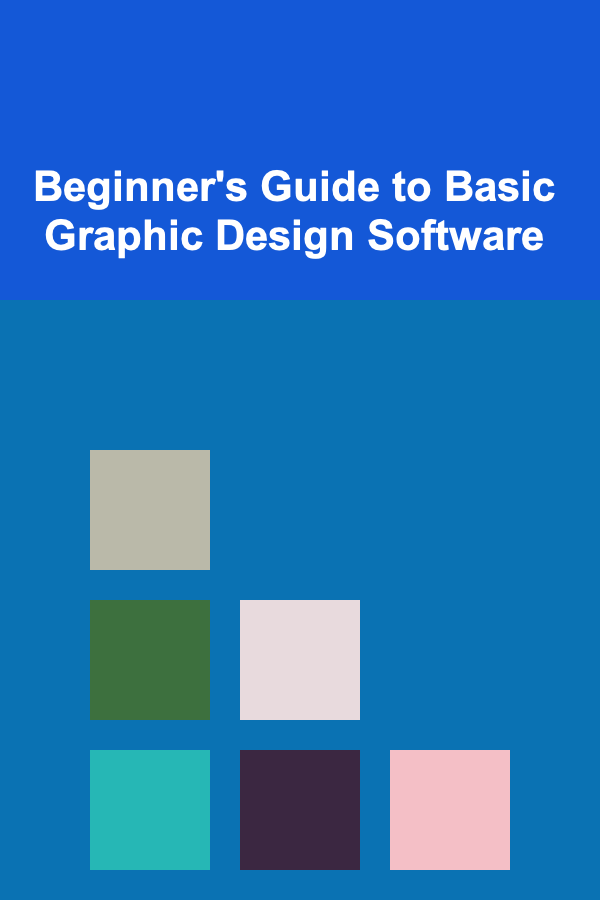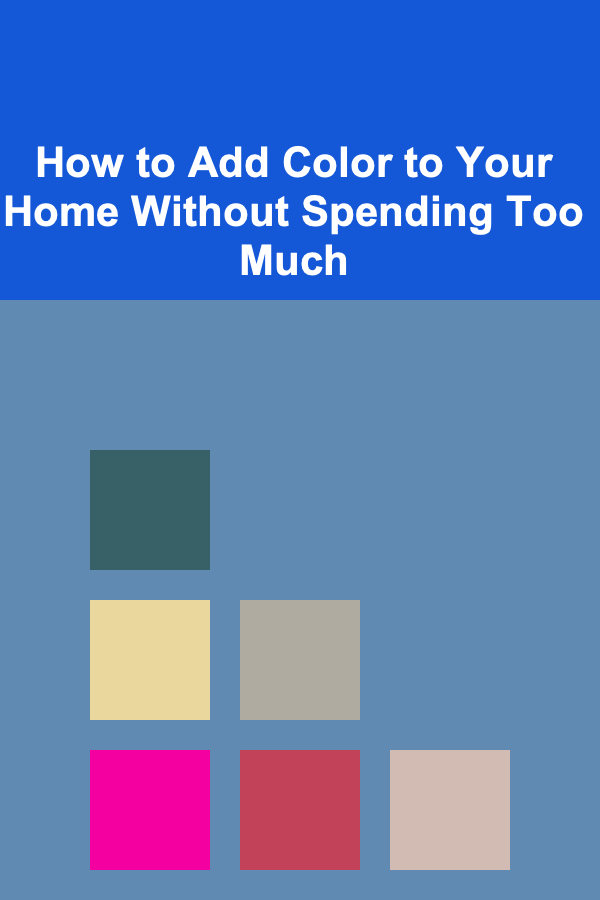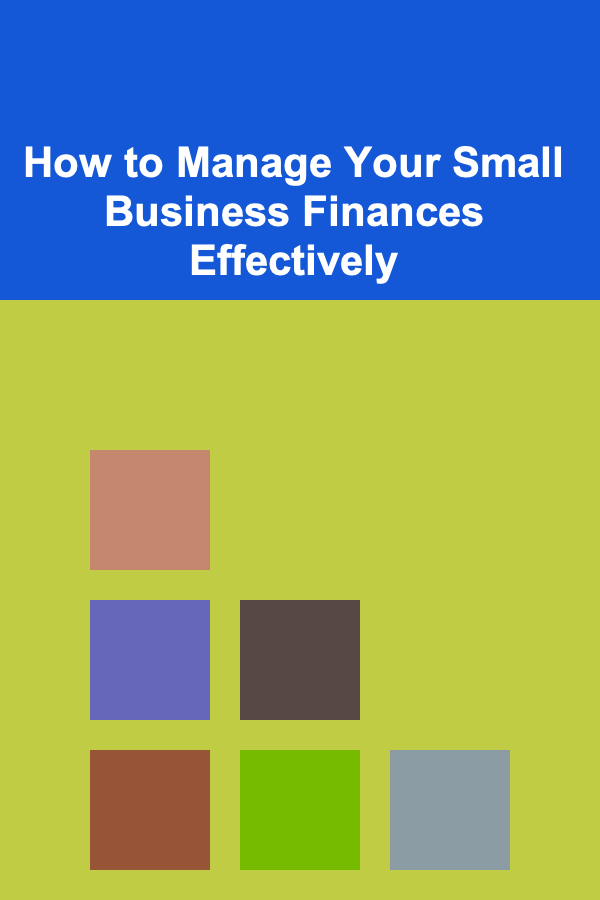
Beginner's Guide to Basic Graphic Design Software
ebook include PDF & Audio bundle (Micro Guide)
$12.99$10.99
Limited Time Offer! Order within the next:

Graphic design has become an essential skill for many professionals across various industries. Whether you're a budding entrepreneur, a social media manager, or simply someone with a passion for visual arts, learning how to use graphic design software can elevate your projects and help you express creativity more effectively. But with so many design tools available, how do you know which one is right for you? This guide will walk you through some of the most popular beginner-friendly graphic design software options, the basics of getting started with them, and how to use them effectively for your projects.
Why Learn Graphic Design Software?
Before we dive into specific tools, it's essential to understand why learning graphic design software is valuable:
- Visual Communication: Good design helps you communicate messages more clearly and effectively. Whether you're creating marketing materials, websites, or social media posts, design can make a significant impact on how your audience perceives your content.
- Creativity and Branding: Graphic design allows you to showcase your unique style and identity. If you're building a brand or a personal portfolio, knowing how to design your own visuals can help establish consistency and professionalism.
- Versatility: The skills you gain from learning graphic design can be applied in many areas, from logo creation and web design to advertising and product packaging.
Choosing the Right Graphic Design Software
There are many software options available, each with its own strengths and learning curves. The key is to start with the basics and gradually build your skills. Here are a few tools that are perfect for beginners:
1. Canva: A User-Friendly Option for Non-Designers
Best for: Beginners, entrepreneurs, and content creators.
Canva is one of the most popular online design tools, widely loved for its simplicity and ease of use. It's a web-based application, meaning you don't need to download anything to start using it.
Getting Started with Canva:
- Templates: Canva offers thousands of pre-designed templates for everything from social media posts to brochures and business cards. If you're not sure where to start, simply pick a template and modify it according to your needs.
- Drag-and-Drop Interface: Canva's interface is intuitive, allowing you to drag and drop text, images, icons, and shapes onto your canvas. The interface is designed for people who don't have graphic design experience, making it an ideal entry point.
- Customization: You can upload your own photos, logos, and other assets, or choose from Canva's extensive library of free and premium stock images, illustrations, and fonts.
Key Features to Explore:
- Text and Typography Tools: Adjust font sizes, colors, line spacing, and more. You can experiment with font pairings and alignments.
- Image Editing: Canva also offers basic photo editing tools such as filters, crop, brightness, contrast adjustments, and even background remover (in the Pro version).
- Collaboration: You can share your designs with others for feedback or collaborative work, which is useful for teams.
Why Canva is Great for Beginners:
- The learning curve is low.
- You can access a wide variety of design assets.
- It has a free version with enough features to get started.
2. Adobe Spark: Simplified Design for Quick Results
Best for: Social media marketers, content creators, and small businesses.
Adobe Spark, part of Adobe's Creative Cloud suite, is another beginner-friendly tool designed for creating high-quality visuals quickly. It's available as both a web-based tool and a mobile app.
Getting Started with Adobe Spark:
- Templates and Quick Actions: Adobe Spark makes it easy to create social media posts, videos, and web pages. Similar to Canva, it offers pre-made templates for various types of content, such as flyers, presentations, and videos.
- Simple Editing Tools: The interface is straightforward, with options to add text, adjust color schemes, insert icons and shapes, and more. Adobe Spark even allows you to create animated graphics.
- Customizable Branding: You can upload your brand's logos, fonts, and color palette to ensure your designs are consistent with your brand identity.
Key Features to Explore:
- Video Creation: Adobe Spark allows you to create video slideshows with ease. You can add text, images, music, and transitions to create engaging video content.
- Web Pages: The web page feature allows you to create visually rich landing pages without any coding.
- Social Media Integration: Spark makes it easy to export your designs to social media platforms like Facebook, Instagram, and Twitter.
Why Adobe Spark is Great for Beginners:
- It's quick and easy to use for creating content in a short amount of time.
- It's ideal for social media posts, stories, and videos.
- Seamlessly integrates with other Adobe products if you upgrade to Creative Cloud.
3. GIMP: A Free Alternative to Photoshop
Best for: Those looking for more advanced features without the cost.
GIMP (GNU Image Manipulation Program) is a free, open-source graphic design software that is often compared to Adobe Photoshop due to its robust image editing capabilities. While it has a steeper learning curve than tools like Canva, it's a great option for beginners who want to dive into more advanced features.
Getting Started with GIMP:
- User Interface: The interface is more complex than Canva or Spark, but it's still manageable for beginners. If you're familiar with Photoshop, you'll find GIMP's layout quite similar.
- Basic Image Editing: GIMP allows for advanced photo editing, including cropping, color correction, and retouching. You can also create compositions by working with layers and masks.
- Free and Open-Source: As a completely free tool, GIMP provides a broad range of features typically found in expensive software, making it an excellent alternative for those on a budget.
Key Features to Explore:
- Layer-Based Editing: GIMP allows you to work with layers, which is an essential skill for creating more complex designs like posters or website graphics.
- Advanced Filters and Effects: You can apply various filters and effects, such as blur, sharpening, or artistic effects to photos.
- Plugins: GIMP supports plugins, allowing you to extend its functionality and automate certain tasks.
Why GIMP is Great for Beginners:
- It's free and open-source.
- It offers powerful features for photo manipulation and design.
- It has a strong community with plenty of tutorials and resources to help you learn.
4. Inkscape: Vector Graphics for Beginners
Best for: Creating scalable designs, logos, and illustrations.
Inkscape is another free, open-source graphic design software, but it focuses on vector graphics, which are ideal for creating logos, icons, and illustrations. Unlike raster images (which are pixel-based), vector graphics are resolution-independent and can be scaled to any size without losing quality.
Getting Started with Inkscape:
- Drawing Tools: Inkscape offers a variety of drawing tools, including the pencil, pen, and shape tools. You can create custom shapes, paths, and curves, making it great for logo design and digital illustrations.
- Vector Editing: As a vector-based tool, Inkscape allows you to create designs that can be resized for print or web use without losing clarity.
- Layer Management: Like GIMP, Inkscape uses layers to organize your artwork. Layers can be locked, hidden, or reordered for ease of editing.
Key Features to Explore:
- Path Editing: Inkscape provides advanced path editing tools to create precise shapes and curves. You can manipulate anchor points to refine your artwork.
- Text Tools: Inkscape includes powerful text tools, allowing you to add and manipulate text to fit your design needs.
- Export Options: Inkscape supports various file formats for exporting designs, including SVG (Scalable Vector Graphics), PDF, PNG, and more.
Why Inkscape is Great for Beginners:
- It's free and open-source.
- It's perfect for creating vector-based graphics like logos, icons, and illustrations.
- It has a supportive community and a wealth of learning resources.
Tips for Improving Your Design Skills
Regardless of which software you choose, the key to improving your graphic design skills is consistent practice and learning. Here are some tips to help you improve:
- Experiment with Different Tools: Don't be afraid to experiment with new tools and techniques in your design software. The more you explore, the better you'll understand the possibilities of your software.
- Study Design Principles: Learn about color theory, typography, balance, and composition. Understanding these core principles will elevate the quality of your designs.
- Analyze Other Designs: Look at designs you admire and analyze them. Break down what works and why it appeals to you. This will give you insights into how to improve your own work.
- Seek Feedback: Share your designs with others and ask for constructive criticism. Getting feedback from others can help you see your designs from a fresh perspective.
Conclusion
Learning how to use graphic design software is an exciting journey that opens up a world of creative possibilities. Whether you're creating simple social media posts or designing professional branding materials, there's a tool out there that's perfect for your needs. Tools like Canva, Adobe Spark, GIMP, and Inkscape offer a range of features for beginners to advanced users. By starting with the basics and practicing regularly, you'll be able to unlock your potential and create beautiful, effective designs. So, pick a tool, start experimenting, and let your creativity shine!
Reading More From Our Other Websites
- [Personal Care Tips 101] How to Deal with Burnout in Your Career
- [Personal Care Tips 101] How to Incorporate a Toothbrush into Your Daily Routine for Optimal Oral Hygiene
- [Organization Tip 101] How to Ensure Safety Compliance in Rental Properties
- [Home Renovating 101] How to Use DIY Techniques in Your Home Renovation Projects
- [Organization Tip 101] How to Use Drawer Dividers for a Neat Kitchen
- [Personal Care Tips 101] How to Use Eye Cream to Protect Your Skin from Environmental Stressors
- [Home Maintenance 101] How to Master Interior Painting Tips for Different Room Types: From Kitchens to Bedrooms
- [Organization Tip 101] How to Keep Your Living Room Tidy with Daily Habits
- [Home Budget Decorating 101] How to Choose Budget-Friendly Fabrics for Your Home
- [Home Holiday Decoration 101] How to Create Holiday-Themed Party Favors That Will Impress Your Guests

How to Add Color to Your Home Without Spending Too Much
Read More
How to Create a Checklist for Reviewing Your Past Goals During Performance Evaluations
Read More
How to Manage Your Small Business Finances Effectively
Read More
How to Price Your Offerings for Optimal Profit
Read More
How to Use Address Labels for Inventory Management
Read More
10 Tips for Matching Printable Invitation Designs to Your Party's Vibe
Read MoreOther Products

How to Add Color to Your Home Without Spending Too Much
Read More
How to Create a Checklist for Reviewing Your Past Goals During Performance Evaluations
Read More
How to Manage Your Small Business Finances Effectively
Read More
How to Price Your Offerings for Optimal Profit
Read More
How to Use Address Labels for Inventory Management
Read More